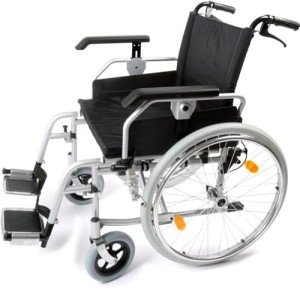Bariatric Wheelchair Seat Width
Seat Width
Having the proper seat width is necessary to wheelchair users who invest longer periods in their chairs. Too narrow a seat will cause pressure on the hips and thighs which might cause sores or pressure points. Having too large a seat can likewise make it difficult for the user to reach the hand rims to propel themselves or maneuver in small areas.
To determine the right seat width a person would sit on a chair generally and have their measurement taken throughout their lap at the best point which is usually their hips. A wheelchair determining tape can be used to determine this, but a yard stick is chosen as it avoids people from covering the tape around their hips which would offer an inaccurate outcome.
The standard wheelchair seat width is 16" (narrow grownup), 18" (basic grownup), and 20" (large grownup). For bariatric patients, a 24" seat is available. This heavy-duty additional large bariatric wheelchair from Medline includes swing-away footrests, a carbon steel frame with rust- and chip-resistant chrome plating, and easy-to-clean vinyl upholstery. bariatric heavy duty transport wheelchair has a weight capacity of 500 pounds.
Seat Depth
Traditionally, the seat depth of a bariatric wheelchair was included 2" to the measurement taken at the user's widest point (generally their hips). This was indicated to accommodate extra layers of clothing that might be worn during cold weather condition. Nevertheless, this practice is ending up being less common as wheelchair users are able to invest more time inside your home and are not using long coats. This makes the seat depth of a chair less essential when picking a bariatric wheelchair. Nevertheless, it is still crucial to select an option that provides appropriate assistance for larger users.

The Medline folding extra large bariatric manual wheelchair features a comfortable 24" seat width and a heavy-duty slide tube silver vein frame. It likewise has an adjustable axle and tool-free elevating legrests.
Seat Height
When it comes to figuring out the right wheelchair seat width you ought to constantly determine from the user's widest point which is normally their hips. You will likewise need to think about whether the user is going to be using a winter coat as this might add 2" to the width required.
When a wheelchair remains in use it must just be operated on level surfaces with the wheel locks completely engaged. bariatric heavy duty transport wheelchair is to avoid the chair from having the ability to move slopes that are 10 degrees or greater. It is likewise important to keep in mind that any activity that may shift the center of gravity in the chair should be done with care. This includes reaching for items that need the person to lean out of their seat or trying to stand from it.
Whenever you have the chair in usage it is suggested that you frequently inspect it for damage and lube any areas that are deemed essential. For instance, the casters ought to be oiled by removing the caster fork and utilizing a multi-purpose grease to apply to the caster stem bearings. Likewise, the foot plates can be adjusted by loosening up the bolt and then moving them to the desired position. This enables the feet to sit easily on the footplate and avoids any pressure points from forming. This can be really uneasy for the user and if left ignored, can result in press sores.
Weight Capacity
Bariatric wheelchairs are created to support more weight than basic wheelchairs. This makes them sturdier and much better equipped to handle falls. They are likewise generally bigger and broader, making them less maneuverable in tight areas than basic wheelchairs. They need vehicles with unique ramps and lifts to load them, along with chauffeurs who understand how to finest transport them from one place to the next.
When choosing a wheelchair, consider its weight capacity as it will be the main determining consider whether it will accommodate your passenger's needs. The weight capacity of the chair is often noted as a fixed load, meaning that it suggests the quantity of weight the chair can conveniently hold while standing still. However, some producers also list an active load that is based upon a drop test and can replicate the impact of somebody sitting down in the chair. This might be a more reputable measurement of the weight limit, depending on your needs.
If you prepare to carry out activities that shift your center of gravity in the seat (such as reaching for things), make sure to have front casters pointed in a forward instructions and wheel locks engaged so the chair will not topple. Likewise, check that casters are lubricated regularly to avoid extreme wear and abrasions. The lubrication treatment involves removing the fork, separating the caster from the wheel, and greasing the caster stem bearings with high-quality multi-purpose grease.
